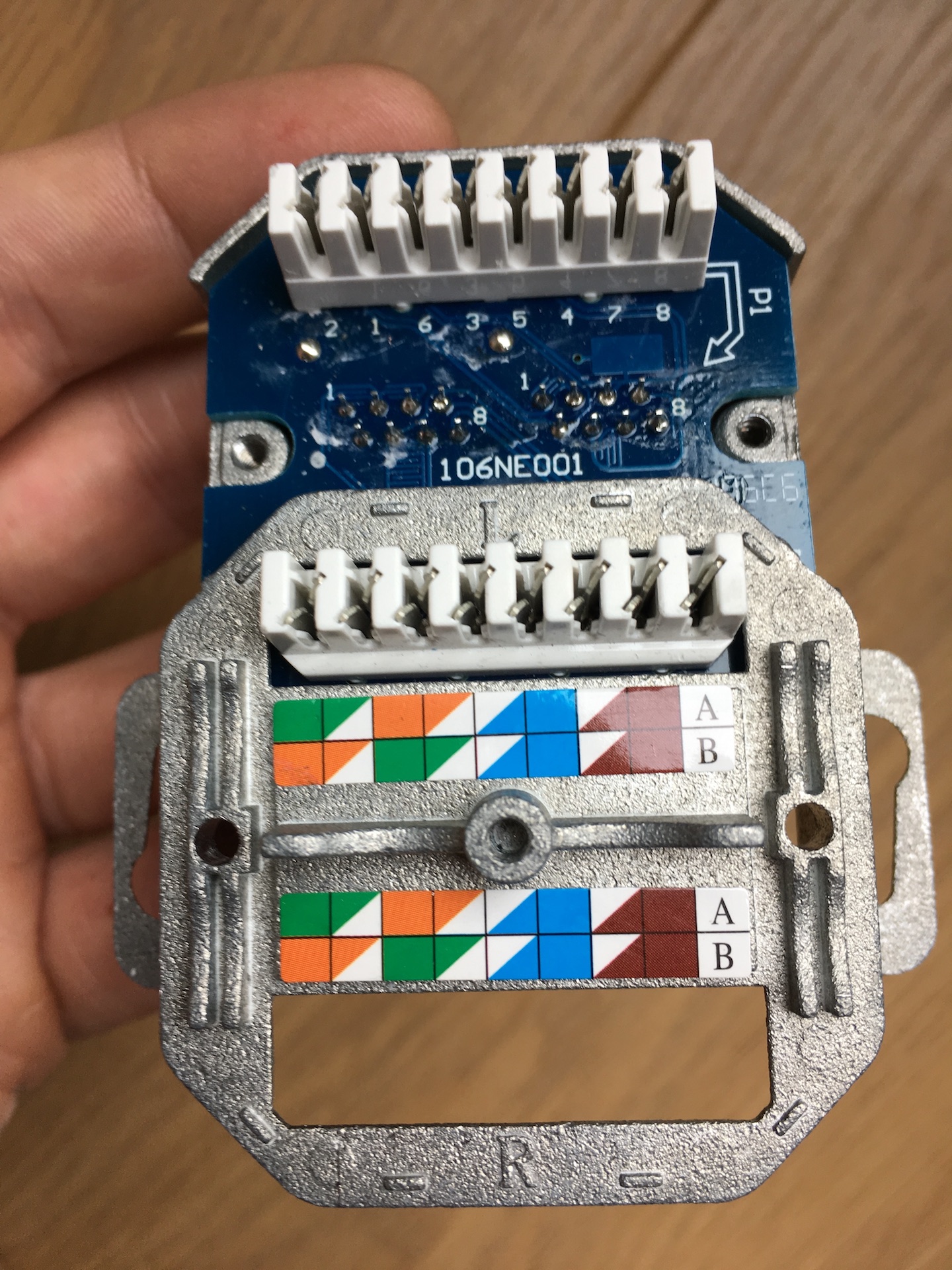I manage the Ethernet networks in several buildings. One of the big questions out there is "Which Ethernet wiring standard: 568A or 568B, is the right one to use?"
It is important to note that 568A and 568B are electrically identical. A router or switch or other device won't be able to determine if a building's cabling is A or B. The only difference between them is the colors of the wires used at each pin. And Ethernet devices can't see colors.
 |
| How important is swapping Green and Orange? |
It is also important to note that the standard used is only important in terms of installed building wiring. It really doesn't matter for patch cords, where a single person can look at the pin-out colors at both ends without digging into wall boxes or crawling through closets.
But if a specific cable inconsistently uses different wires at each end, that's a problem. So what matters is consistency. If you're consistent, all is good. The goal is to make it easy for anyone doing working to get it right.
Here are my rules for which one to use:
- Does the building already follow one of these standards? If so, use that standard. Decision made.
- Does the campus / group of buildings already follow one of these standards? If so, use that standard. Decision made.
- Does the organization that owns or controls the building already follow one of these standards? If so, use that standard. Decision made.
- Are there no standards and no existing wiring? Use 568A. Decision made.
The logic in all this is that you do not want a building where there is a mix of both standards. If a decision has already been made at the local level, use that local standard. If a decision has been made at the higher level, use that higher level standard.
This only breaks down if you have a mix of standards in one building. At that point, you'll need to try to figure out which one is best for the techs who will be working in the building now and in the future. For example, you could say something like "all white and beige jacketed cables are 568A, and all blue cables are 568B". Or perhaps "all cabling must be 568A, except in the west wing, where all cabling must be 568B". It's not ideal, but it sure beats "random".
In my world, my organizational standard is 568B. I'm not sure why, but that was selected back in the day. Therefore, a new building with no existing wiring will use 568B. Regardless of our institutional standard, roughly 30% of our buildings are 568A based, and we're not going to change them.